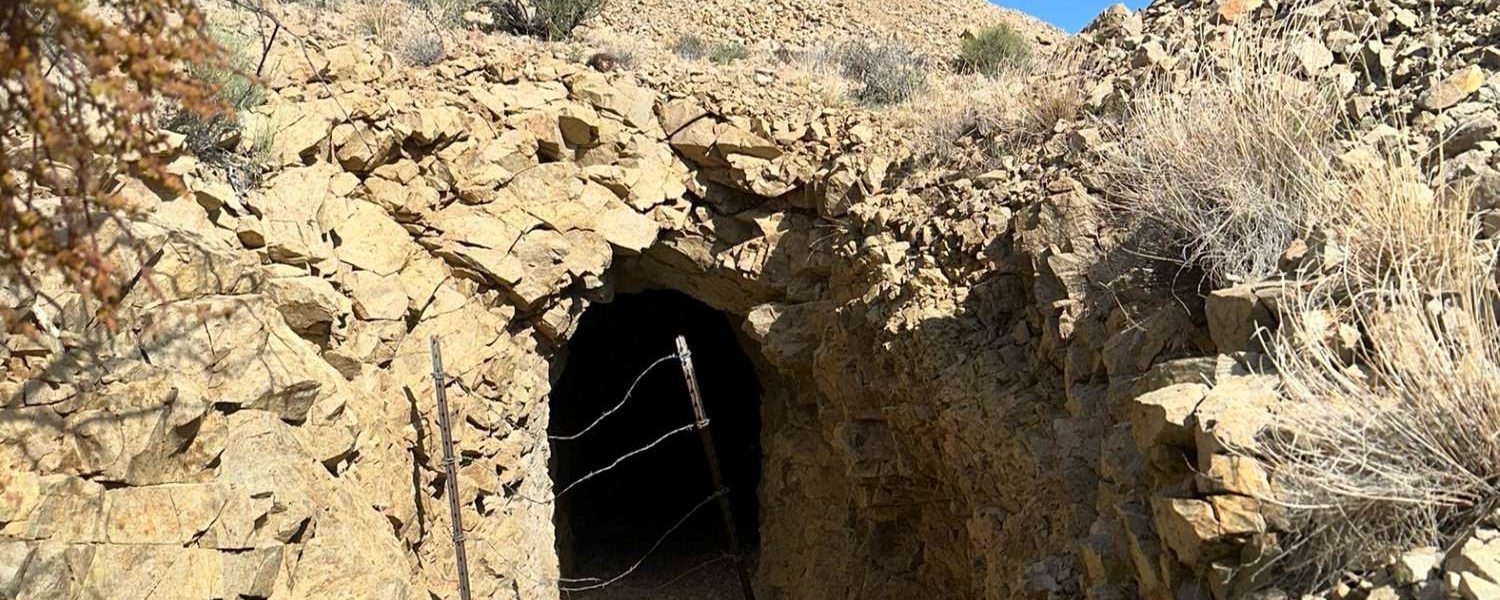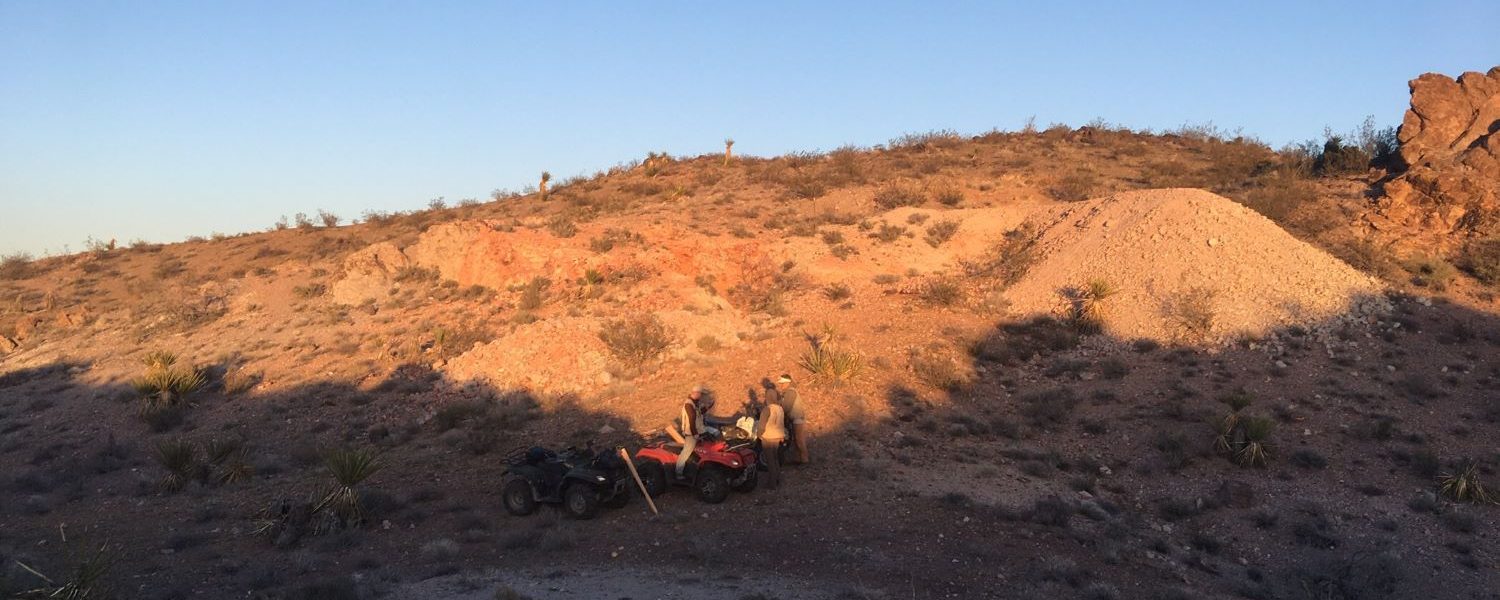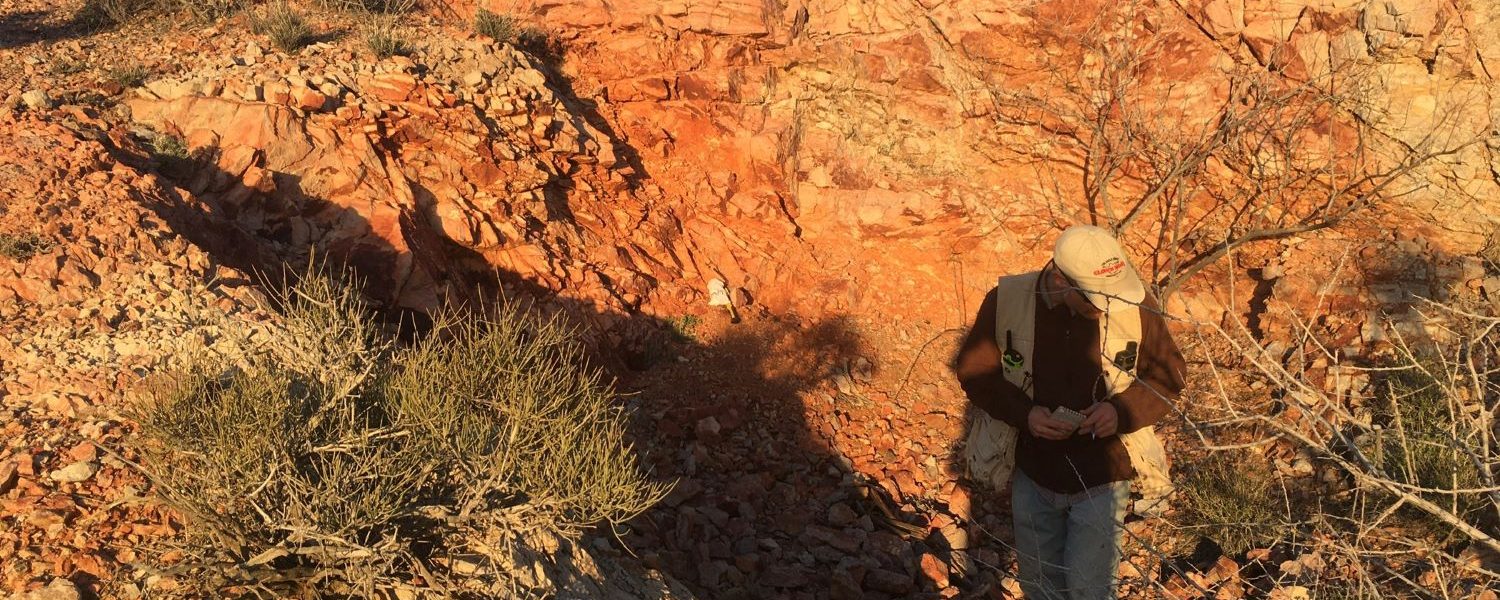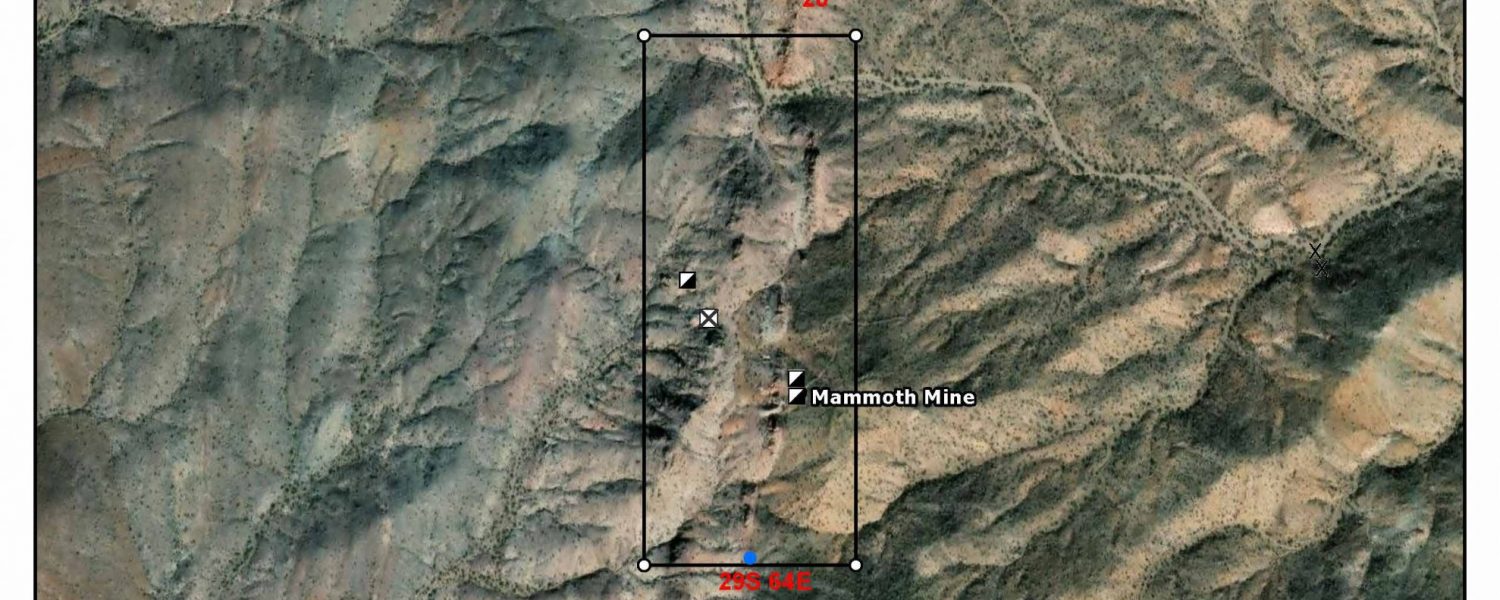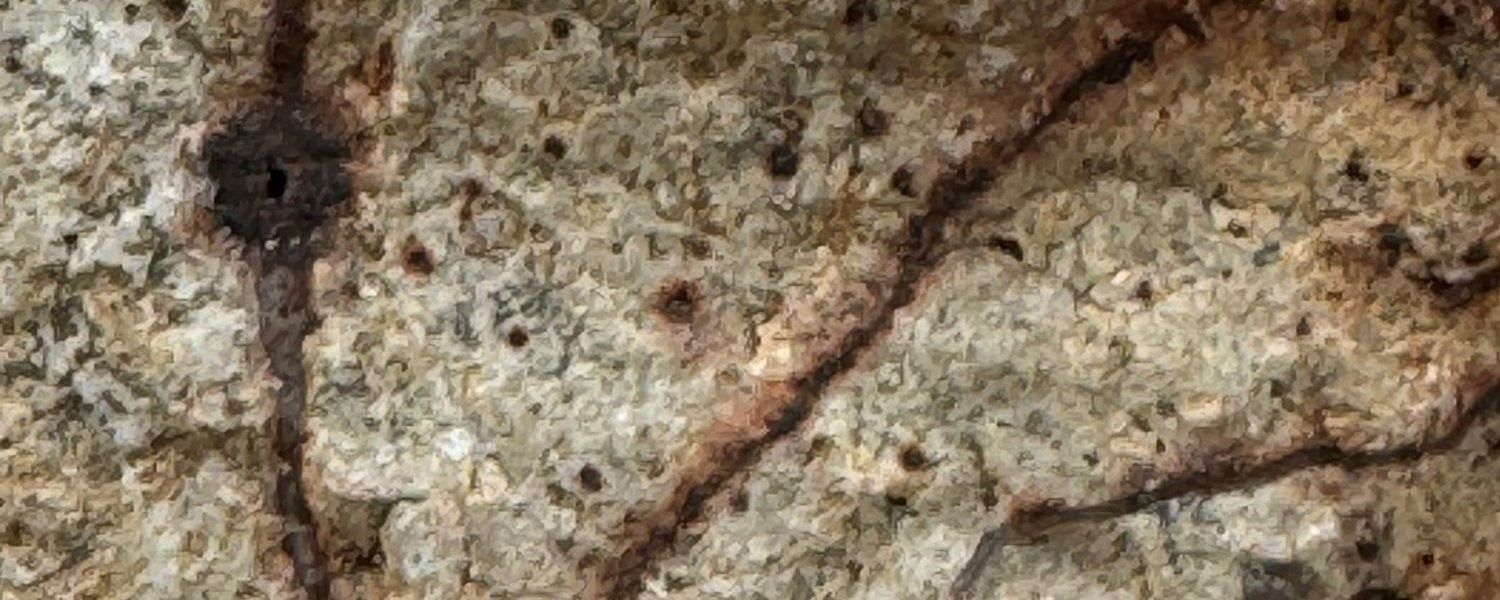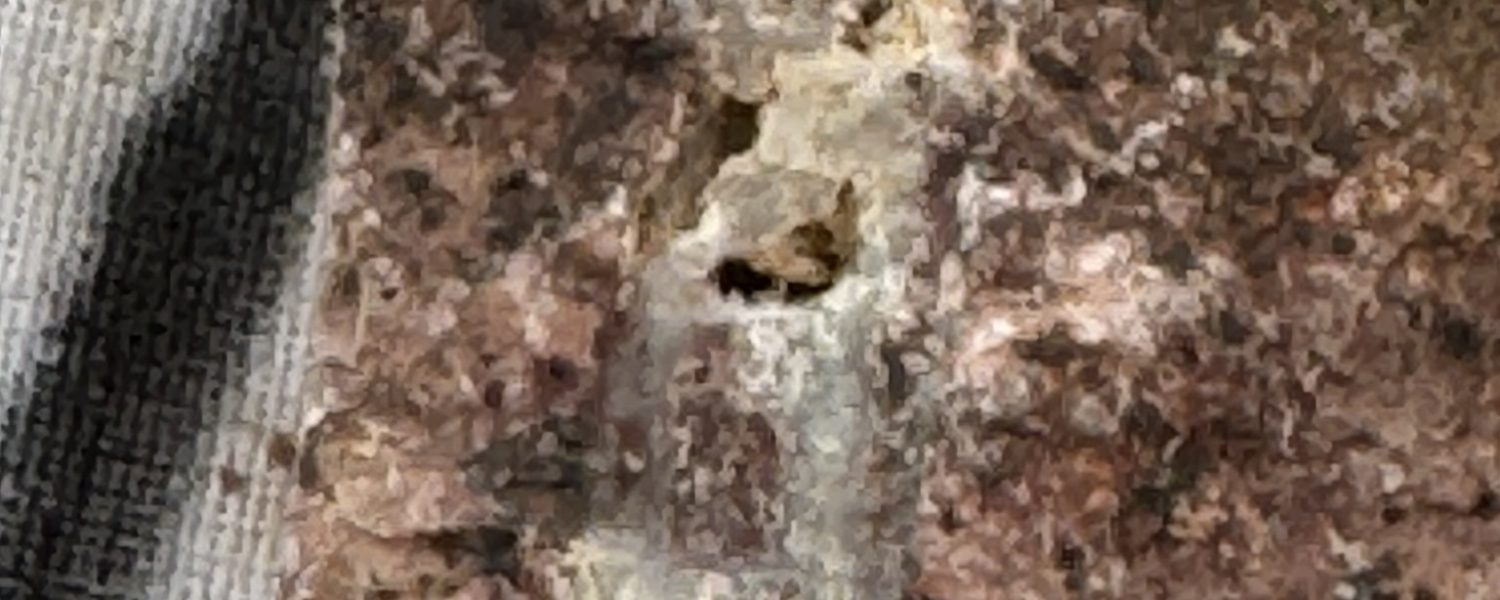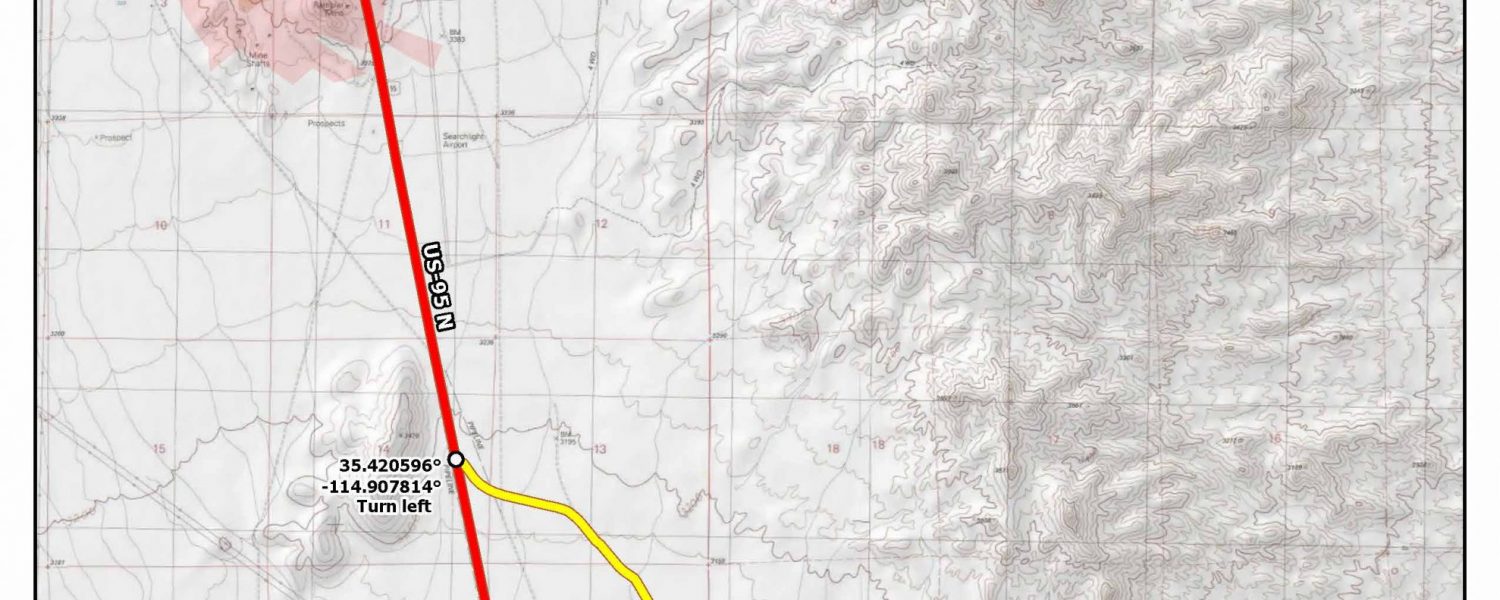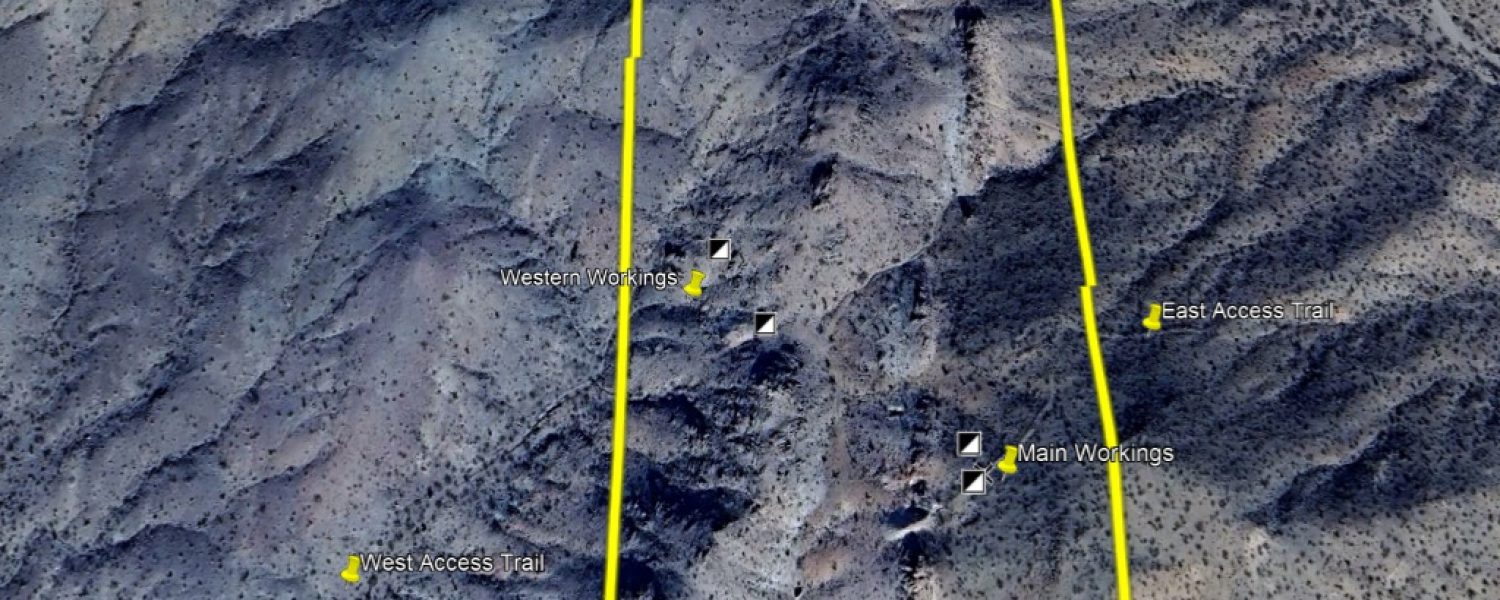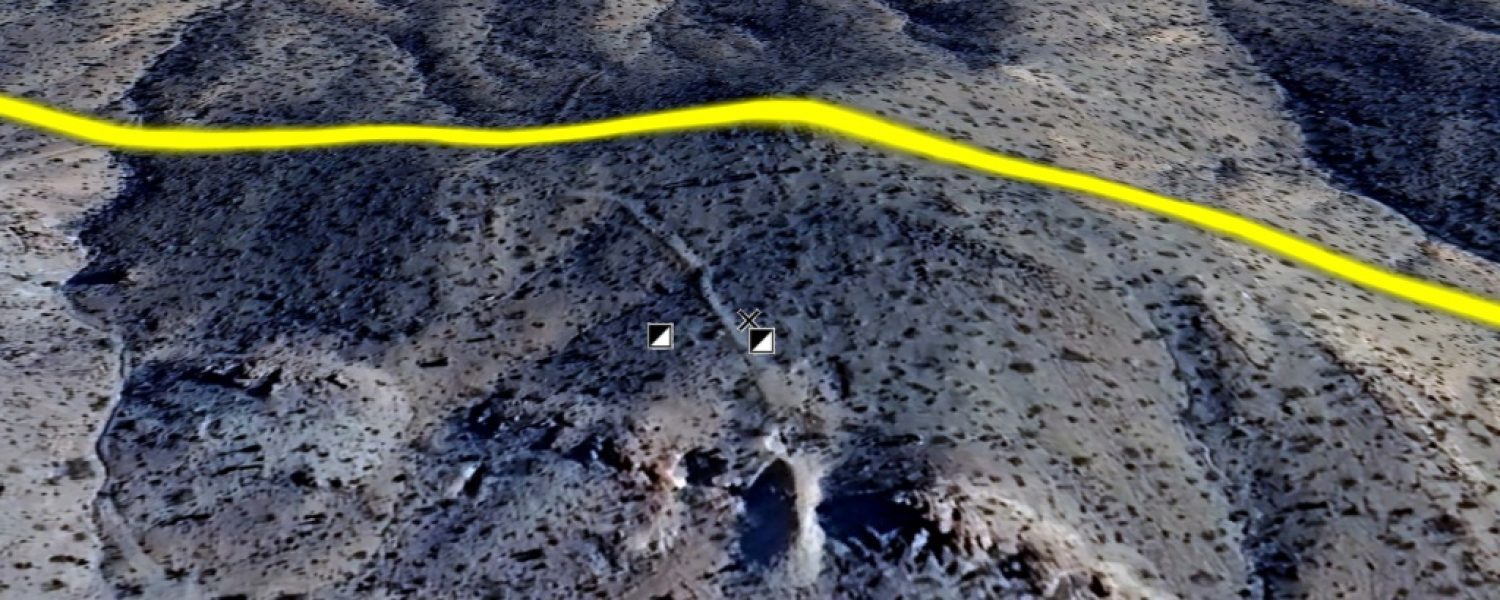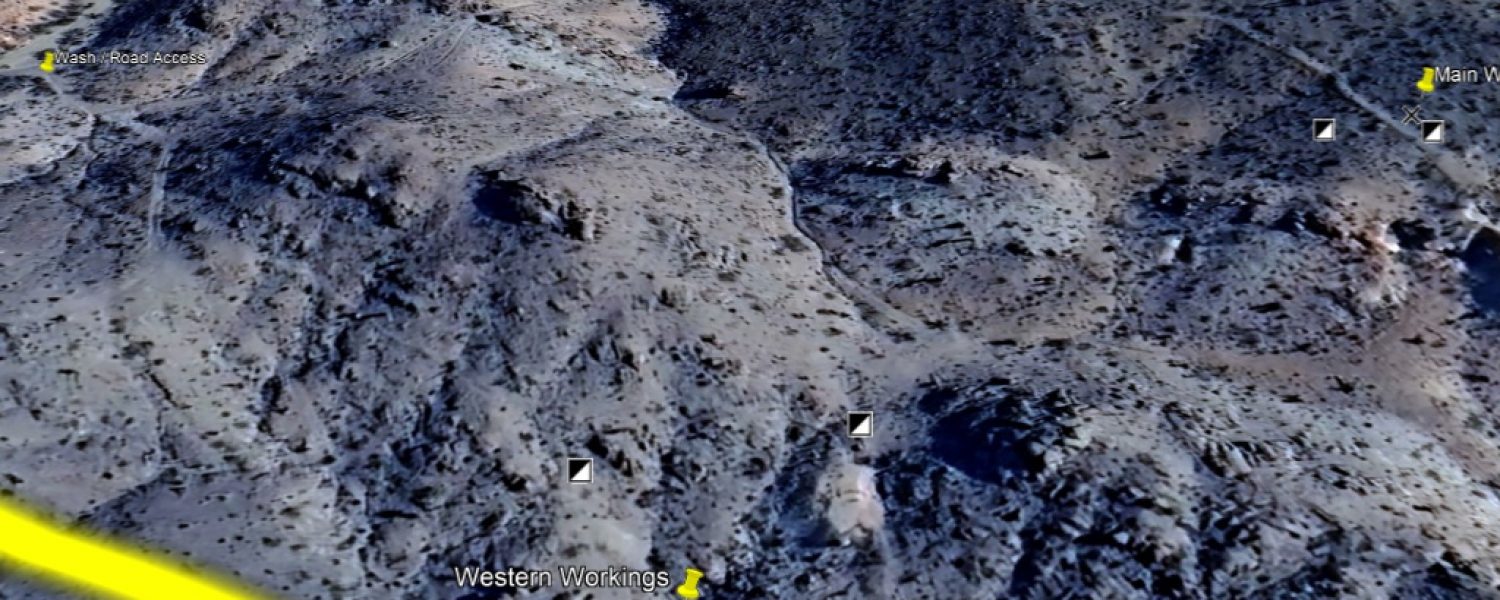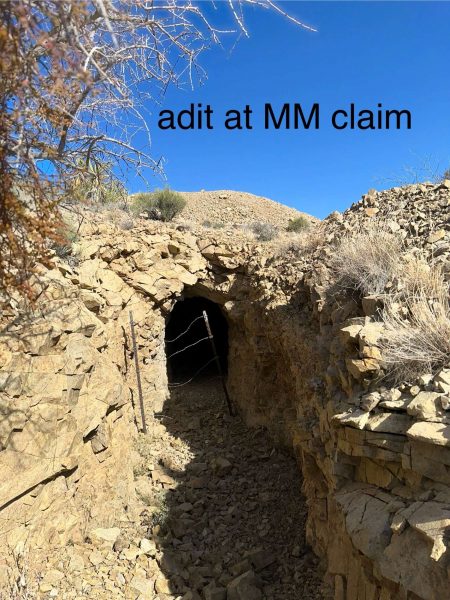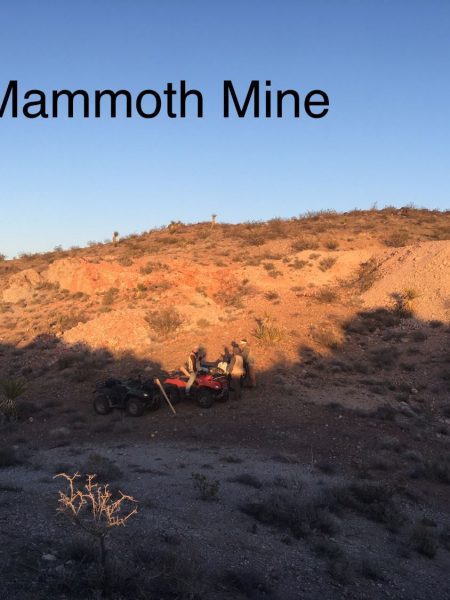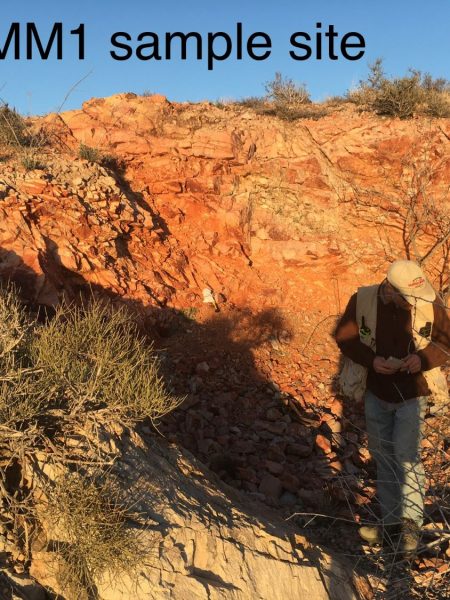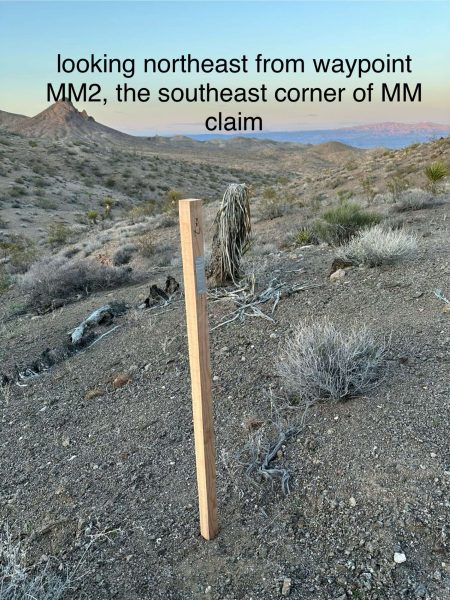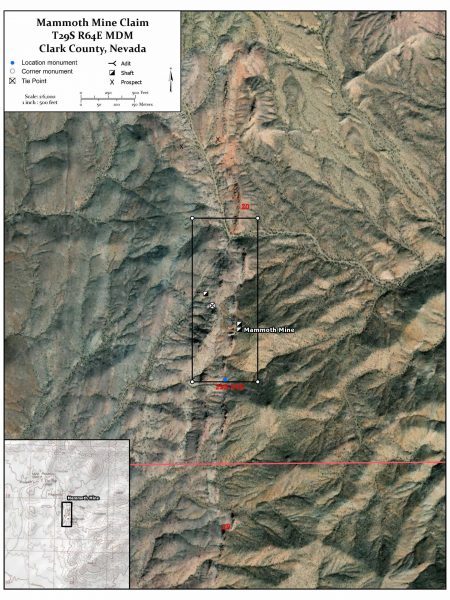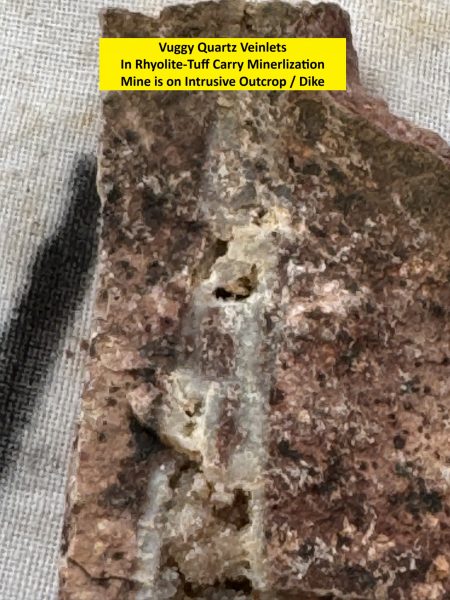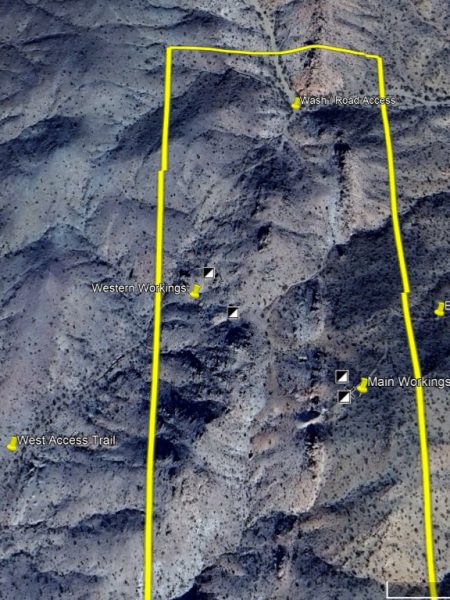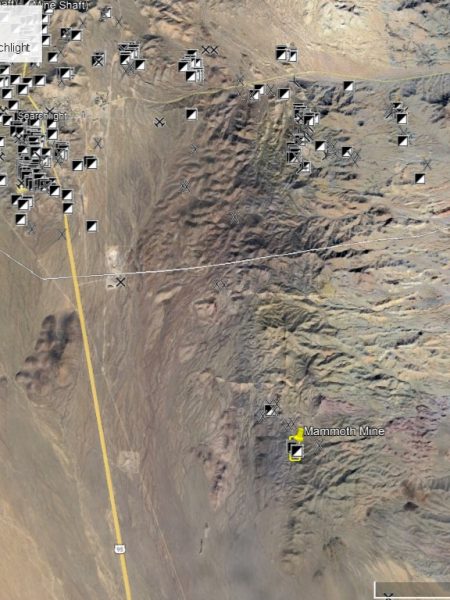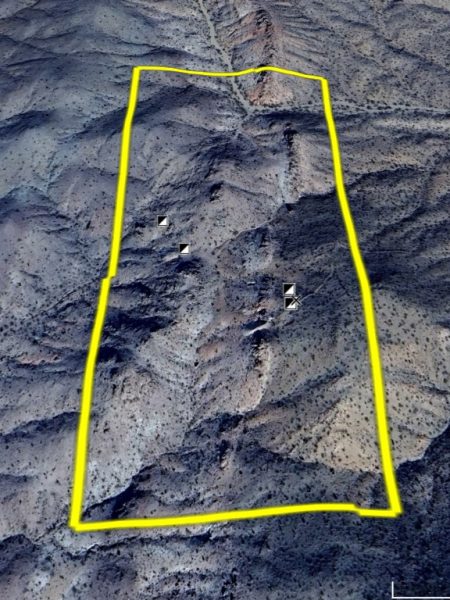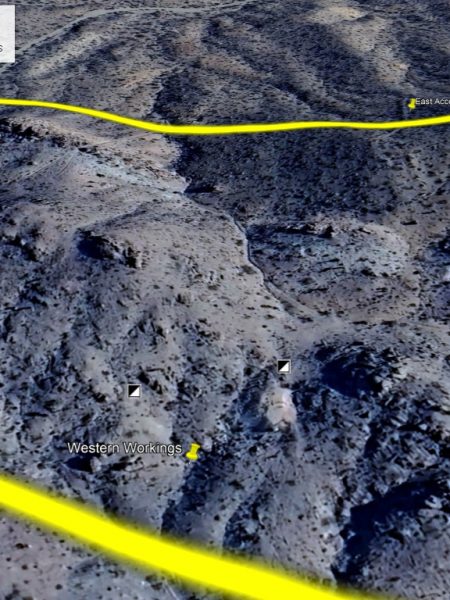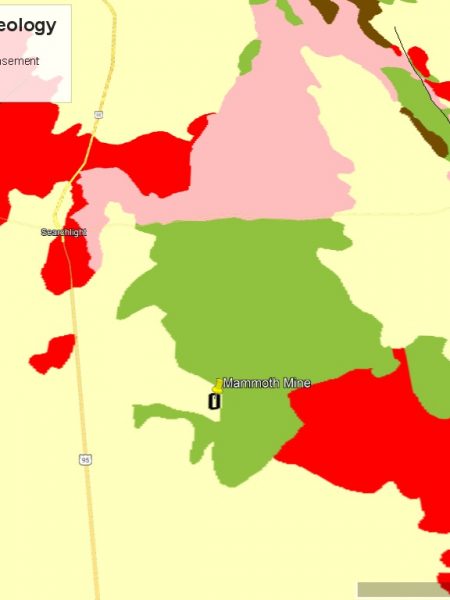MAMMOTH MINE LODE MINING CLAIM
The Mammoth Mine mining claim consists of one (1) unpatented lode mining claim covering 20.66 acres on federal land managed by the U.S. Bureau of Land Management. The Mammoth claim is in the Searchlight District in Clark County, Nevada which is known for gold, silver, lead, zinc, copper, and turquoise.
The Mammoth claim contains four (4) mapped shafts, an adit and multiple pits, ore piles, and tailings piles.
I have gotten some great assays from claims nearby – averaging about .70 ounces per ton gold equivalent (combination of gold and silver).
The pit at Mammoth has plenty of ore with quartz veinlets with bulk tonnage potential. There is a pit in an area with intense alteration and quartz stockwork veining.
Location and Access: From Las Vegas head south on US Highway 95 for 57 miles to Searchlight, Nevada. From Searchlight, proceed 3.15 miles south on Highway 95, take a left (east) on a dirt road. Drive 3 miles southeast on the road to get to the mine. There are two access points to the claim – from the north and west. There is a navigable wash running north-south through the claim.
GPS Coordinates: Lat: 35.402782° , Long: -114.861661° (location of Eastern mining shaft and tailings)
Mining and Exploration Potential: the Mammoth claim could be developed for small scale gold mining depending on exploration results. It could also be developed into a larger exploration play that may interest one of the local mining companies.
The Searchlight gold deposits had historical grades of around 1 ounce per ton gold. The potential here to find more blind deposits of high-grade gold veins.
Mammoth has serious workings (shafts, adits) and tailings suggesting this was a substantial operation.
The vein material looks excellent and the presence of vuggy quartz veinlets suggest this was in the ‘boiling zone’ where good epithermal gold deposits are created.
The Searchlight deposits are usually found at the contact between the metamorphic rocks and the intrusives. The Mammoth claim is on a dike of rhyolitic intrusive rocks with the older metasediments.
Magnetic surveys would be well-suited to identifying additional mineralized dikes and intrusives.
The Searchlight District is located in Clark County, Nevada about 57 miles south of Las Vegas.
The district was discovered in 1897 on the Searchlight claim which became the Duplex Mine. Shortly thereafter, a discovery was made at the Quartette Mine which became the biggest producer in the district. Mills were built on site when water was discovered.
The Searchlight mining boom peaked in about 1907. The town boasted 44 working mines, a dozen saloons, several mills, and a population of 5,000.
In 1908 a turquoise weighing 320 carats was found in the district and valued at $2600 ($72,000 in today’s dollars). The Simmons Mine, a significant turquoise producer, is to the west of Searchlight in the Crescent District. Small turquoise prospects are found throughout the district.
The Searchlight District was in continuous production from 1902 to 1954. Records indicate that 581,014 tons of ore was produced in this timeframe yielding 246,991 ounces of gold, 219,596 ounces of silver, 650,550 lbs of copper, and 1,675,560 lbs of lead.
Regional Geology: The Mammoth claim is located in the Walker Lane Mineral Belt within the Basin and Range physiographic province. The Basin and Range province covers most of Nevada and consists of narrow NE trending mountain ranges between flat, arid valleys and basins. The Walker Lane mineral belt is an area with a high density of parallel strike-slip faults extending from Reno to Las Vegas roughly along the California- Nevada border. Faulting and volcanic activity make the Walker Lane favorable for hosting gold and silver deposits including some of the most famous precious metal mining districts in the US including the Comstock, Goldfield, Tonopah, Bullfrog, Mineral Ridge, and Round Mountain.
Local Geology: The District consists of pre-Cambrian schists and gneisses which are intruded by quartz-monzonite and Tertiary volcanics. Ore bodies are found at the contacts and fault zones between the quartz-monzonite and gneisses and also the Tertiary volcanics.
The ore at Mammoth is silicified rhyolitic tuff and rhyolite dikes. Quartz veinlets and stockwork veining are present. The ore might extend beyond veins and be bulk mineable. The old-timers had some open pits.
I assayed the vein of a nearby property and it ran 0.71 oz/ton gold and 14 oz/ton silver.
Available Reports:
Lincoln, F.C., ‘Mining Districts and Mineral Resources of Nevada’, Nevada Publications, Reprint of 1923 Version, Published by Stanley Paher, 1982.
Longwell, C.R., Pampeyan, E.H., Bowyer, B., Roberts, R.J., ‘Geology and Mineral Deposits of Clark County, Nevada’, Bulletin 62, Nevada Bureau of Mines and Geology, Mackay School of Mines, University of Nevada, Reno, 1965.
Morrissey, F.R., ‘Turquoise Deposits of Nevada’, Report 17, Nevada Bureau of Mines and Geology, 1968.
Smith, P.L, Tingley, J.V., ‘Searchlight District Summary’, Nevada Bureau of Mines and Geology, 1983.
FAQ
Why Nevada?
Nevada is consistently ranked as one of the top mining jurisdictions in the world for being mining-friendly and continuing to produce major discoveries. If Nevada was a country it would be the 5th largest gold producer in the world (after Australia, Canada, China, and Russia). Nevada is home to the Carlin Trend, the Cortez Trend, the Walker Lane Trend, the Getchell Trend and many other prolific gold producing regions. In addition to gold Nevada also has major mines producing silver, copper, lithium, iron ore, magnesium, gems and many other minerals. Nevada is 85% owned by the federal government and most of this land is available for claim staking. This means some of the best mining ground in the world is open to small prospectors – a very unique situation. There are many mining companies active in Nevada and therefore, multiple potential buyers for any discovery you make. Canadian based junior exploration companies are particularly active in Nevada.
Why Buy a Claim?
Buying a claim is a great way to get started in mining and prospecting. Buying a claim that is professionally staked reduces your upfront work and the risk of making a mistake on your paperwork or in the field. Our claims are in areas with historical mining activity and most have numerous pits, shafts, and adits to explore. Finding these claims takes lots of research that is already done for you. The best place to find gold is where people have already found it!
Why Us?
I have been working in mineral exploration in the southwestern United States and Alaska for 20 years. I have co-founded four junior mining companies and managed numerous drilling and exploration projects. I have worked with large and small mining companies and know what types of projects they are looking for that can be advanced by small prospectors. I have also worked on small hardrock production projects. I usually try to find claims that have known high grade veins that can be produced and that also have some exploration upside. We stand by our claims and fix any problems that come up. We can also help you with your annual filings. We hire the same professional claim staking companies that the large mining companies hire and all the claims have professionally drafted and accurate maps.
How is ownership of the claim transferred?
Ownership of mining claims is transferred with a Quit Claim Deed which we prepare. We pay all claim transfer fees and file the claim transfer paperwork with the BLM and Clark County. The BLM takes about 2-3 weeks to process the claim transfer (Quit Claim) and register the claim in your name. The Clark County Recorder usually take 1-2 days to return the recorded Quit Claim Deed. Once the transfer is complete we will send you all the original documents including the file stamped Quit Claim Deed, the original location notices and claim maps.
How Much are the Annual Claim Fees?
The BLM charges a $165 per claim annual maintenance fee which is due on September 1st each year. The BLM fees can be paid online through their claim management portal. Clark County requires that a Notice of Intent to Hold form is filed the first year by Nov 1st along with payment of the recording fee of $12 plus $12 per claim.
If you own less than 10 mining claims you can qualify for a waiver of the annual maintenance fee by filing a Small Miner’s Waiver. However, the Small Miner’s Waiver requires that you perform $100 in labor or improvements on the claim each year.
International Buyers
International buyers must either have dual US citizenship and US address or have a US entity or company to own the claim.
